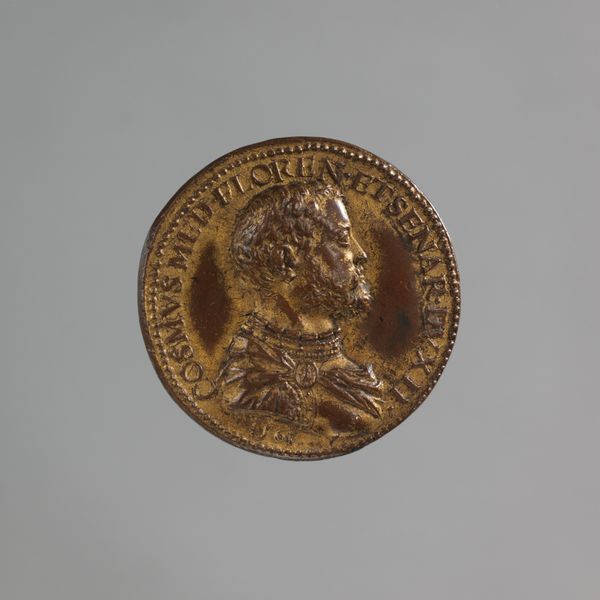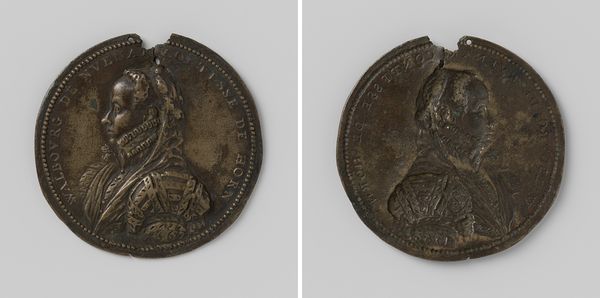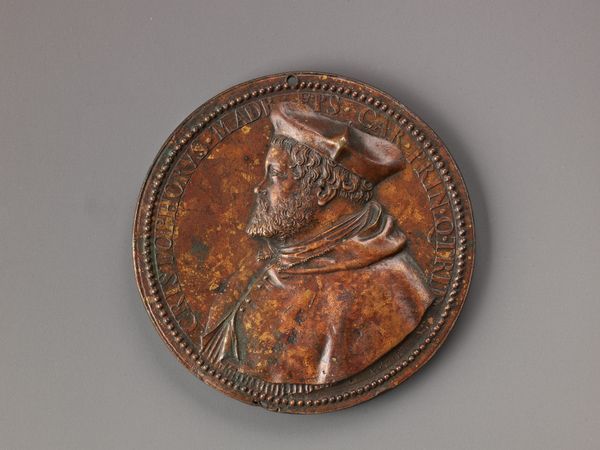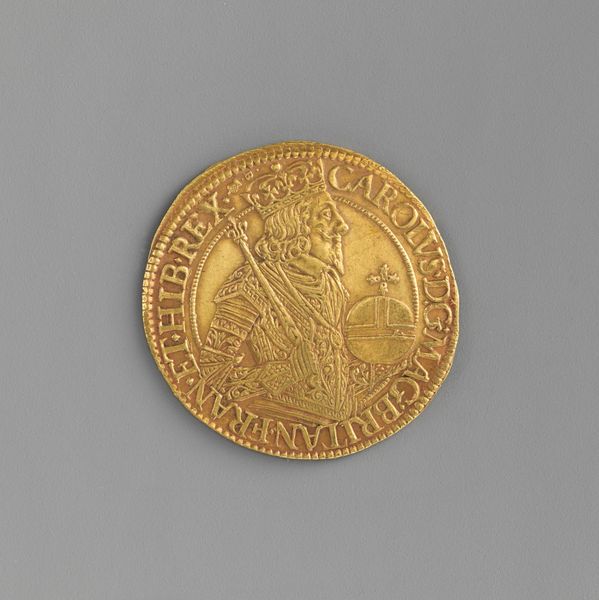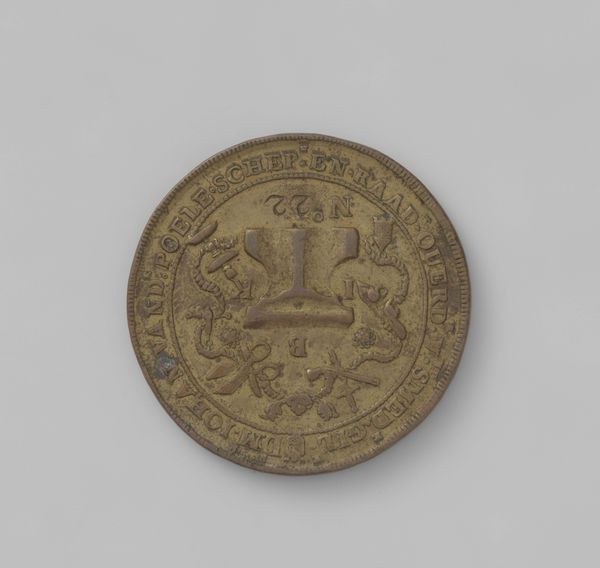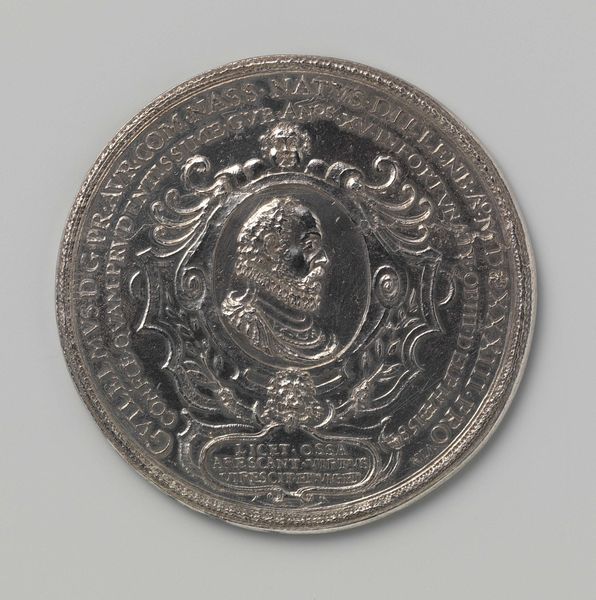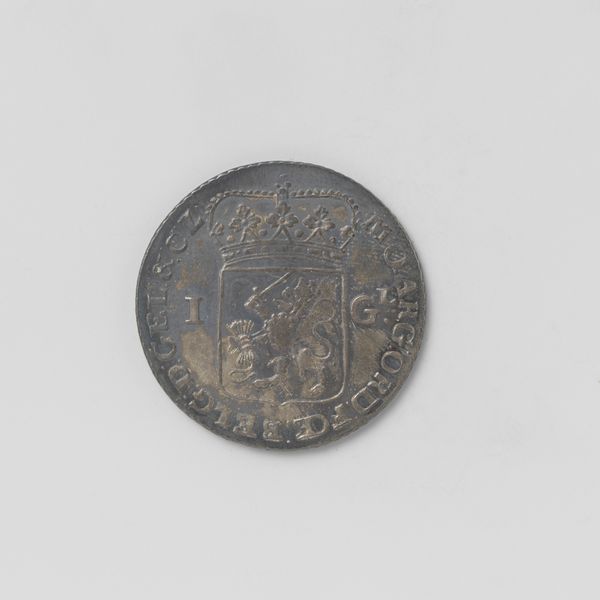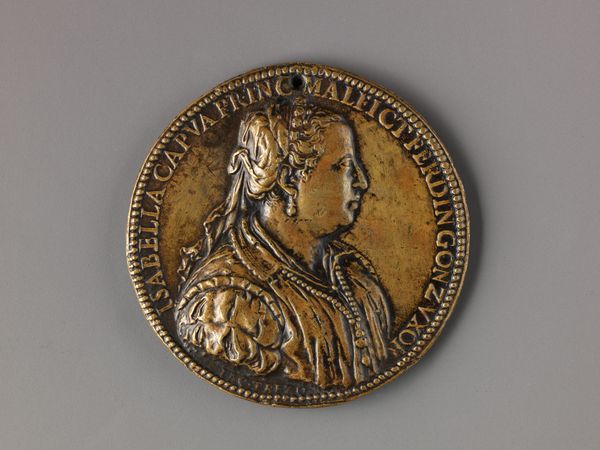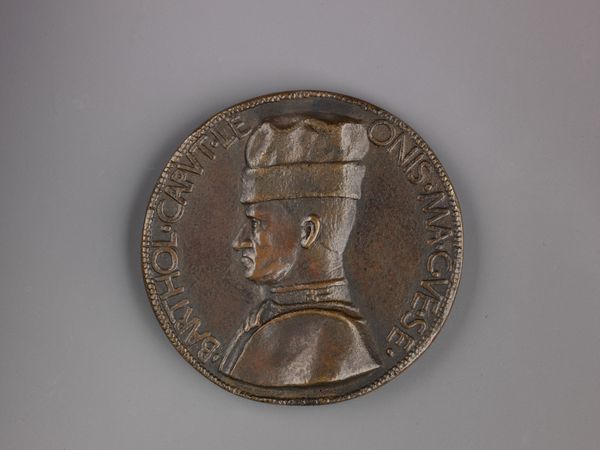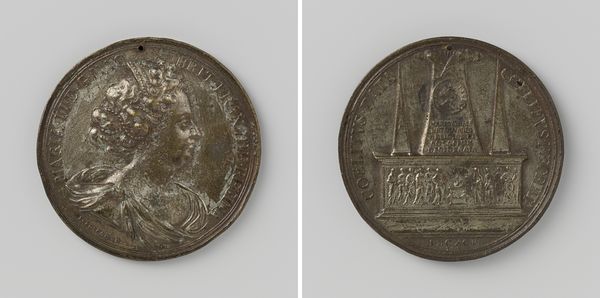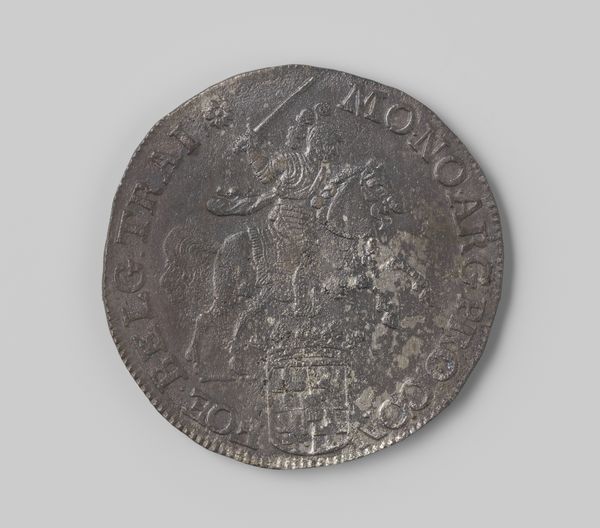
Portrait medal of Mary Tudor Queen of England (obverse); Allegory of Mary Tudor's Reign (reverse) 1554
0:00
0:00
silver, metal, relief, sculpture, engraving
#
portrait
#
medal
#
silver
#
metal
#
sculpture
#
relief
#
11_renaissance
#
sculpture
#
italian-renaissance
#
engraving
Dimensions: Diam. 6.7 cm; wt. 69.11 g.
Copyright: Public Domain
Curator: What strikes me immediately about this portrait medal is the weight it seems to carry. Both literally, as a piece of metal, and metaphorically. There’s a sense of solemnity, even constraint, in the queen's expression. Editor: That's a great point. This is a silver medal dating from 1554, made to commemorate Mary Tudor, Queen of England. Jacopo Nizolla da Trezzo is credited with its design. Beyond just portraiture, these medals often served as political tools. Curator: Ah, a queen as propaganda. It makes me wonder, what story is she trying to tell, or rather, what story is being told about her? There's such formality in her dress, every inch accounted for. I feel like I am peering into a meticulously staged moment. Editor: Absolutely. Medals like this were crucial for projecting power and legitimizing rule, especially during periods of instability. Mary's reign was… complicated, to say the least. A devout Catholic succeeding her Protestant brother, Edward VI, amidst religious turmoil. The reverse side shows an allegory symbolizing her reign, furthering that agenda. Curator: So it’s a multi-layered image then, a face and a carefully constructed fiction, all captured on this small, weighty disc. I imagine holding this in my hand and feeling the cool metal against my skin. Did people wear them, perhaps as amulets of sorts? Editor: Some were indeed worn as pendants, sewn onto clothing, or kept as keepsakes. Distributing them was a way to circulate the monarch’s image and message widely, quite cleverly using art as a form of communication and control. Given Mary's efforts to reinstate Catholicism and her marriage to Phillip II of Spain, the symbolism would be intense, viewed very differently depending on your allegiance at the time. Curator: I find myself fascinated by that level of manipulation—not necessarily judging it, but observing the elaborate dance. It's quite revealing. Even her gaze, averted and resolute, feels charged with purpose. This isn’t just a portrait; it’s a pronouncement. Editor: Yes, it offers a window into the complex interplay of art, power, and religious fervor in the 16th century. Understanding these medals, especially those featuring controversial figures like Mary Tudor, means delving into a dense tapestry of socio-political and religious tensions. Curator: Thank you. Now I look at her again, and I sense not just constraint, but resilience too. Editor: Precisely. And in contemplating that resilience, we begin to grapple with a legacy deeply woven into the fabric of British history.
Comments
No comments
Be the first to comment and join the conversation on the ultimate creative platform.
